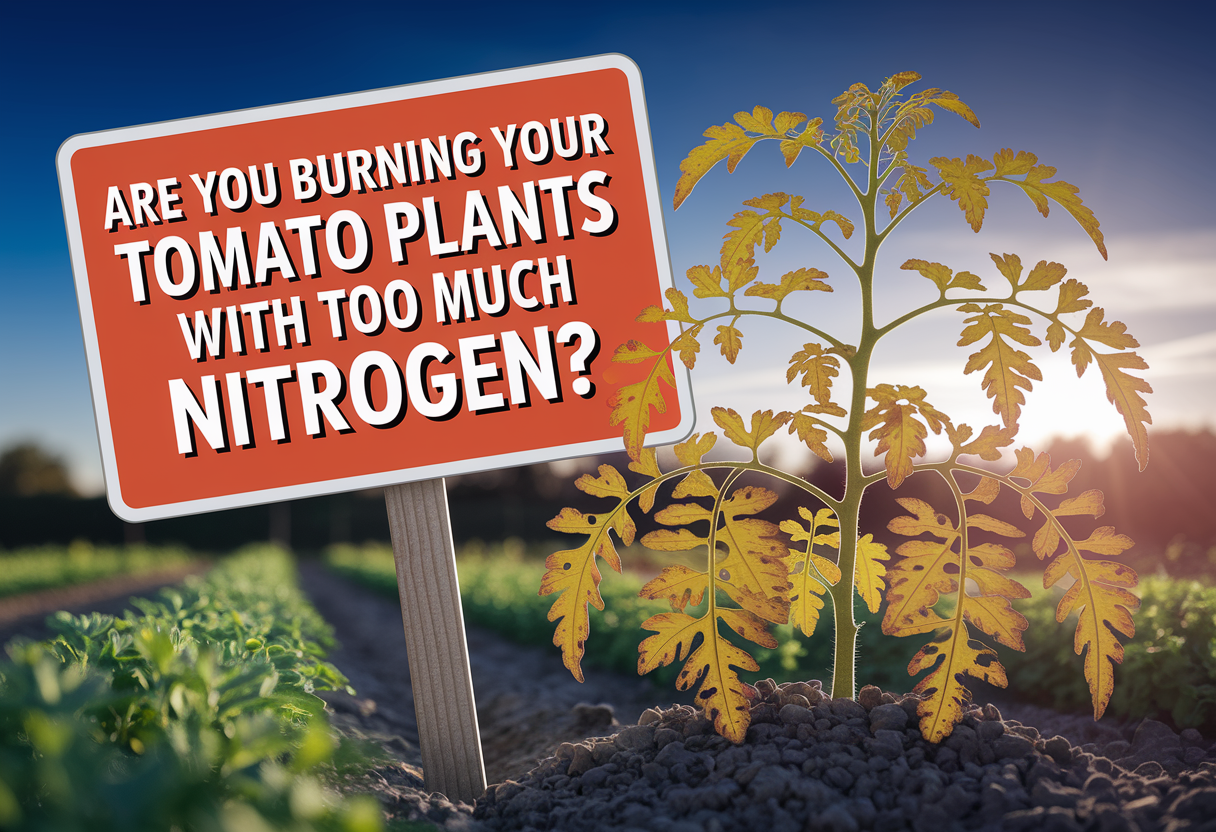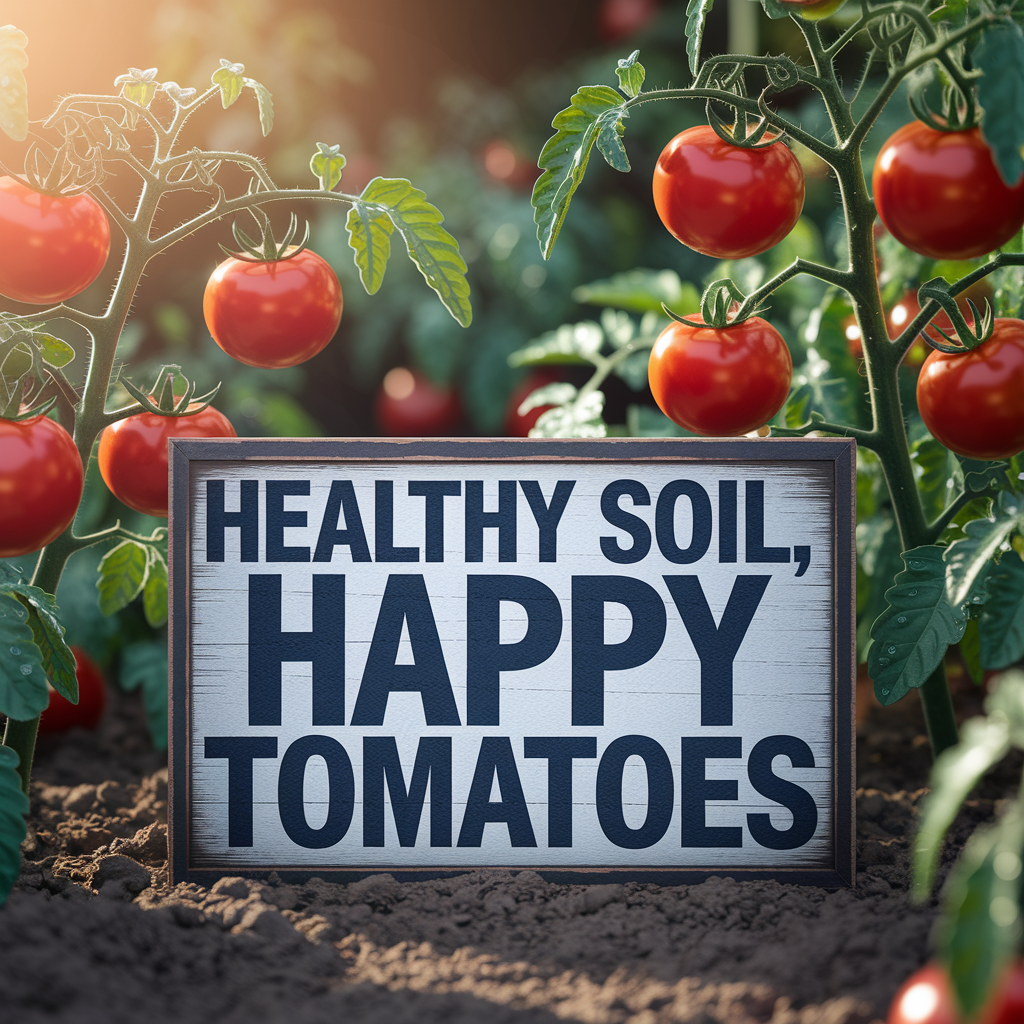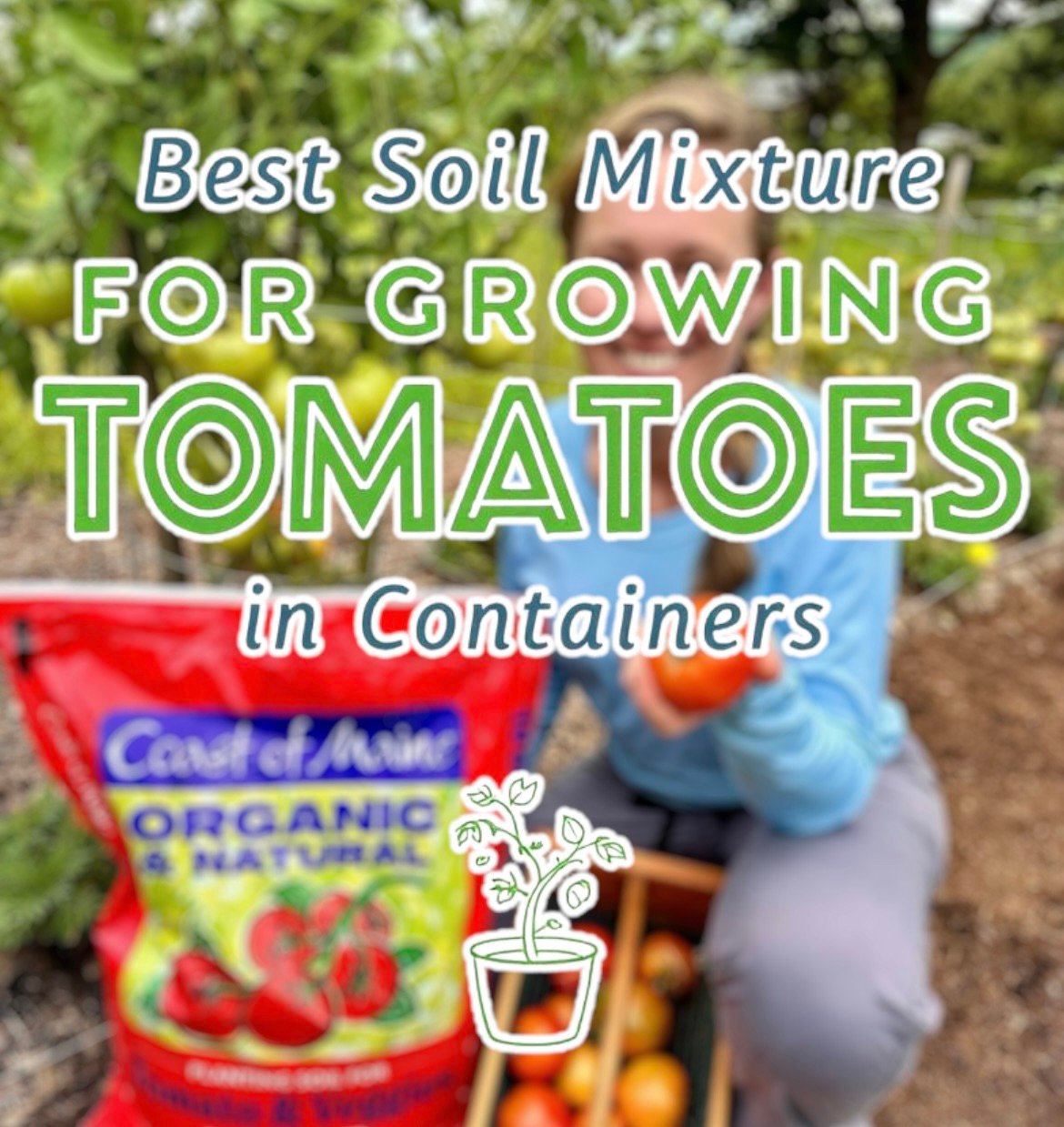
Why Soil Mixture Matters So Much for Tomatoes in Containers
I’ve been growing tomatoes for years, and if there’s one thing I’ve learned the hard way—it’s that your soil mixture makes or breaks your tomato plants when you’re growing in containers. Unlike garden beds, containers don’t have the luxury of natural drainage or a deep root system to pull nutrients from. That means we’ve got to give our plants the perfect blend from the start.
I used to mix my own soil blend every season until I discovered the ⭐ Coast of Maine Organic & Natural Planting Soil⭐—and let me tell you, this stuff works. It’s a premium mix loaded with composted manure, peat moss, and just the right fluffiness for solid drainage without drying out too fast.
What Is the Best Soil Mixture for Growing Tomatoes in Containers?
Here’s what a tomato plant growing in a container really wants in its soil:
- Well-draining texture so roots don’t drown.
- Organic matter to feed the plant over time.
- Lightweight soil that won’t compact.
- Nutrient-rich base—tomatoes are heavy feeders.
The Coast of Maine blend already checks all these boxes. But if you’re like me and enjoy DIY mixing, here’s my homemade recipe:
- 50% quality potting mix (look for one with peat or coco coir)
- 20% compost (worm castings, mushroom compost, or homemade)
- 20% perlite or coarse sand for drainage
- 10% aged manure or organic fertilizer
I sometimes toss in a little garden lime to balance the pH around 6.2–6.8—ideal for tomatoes.
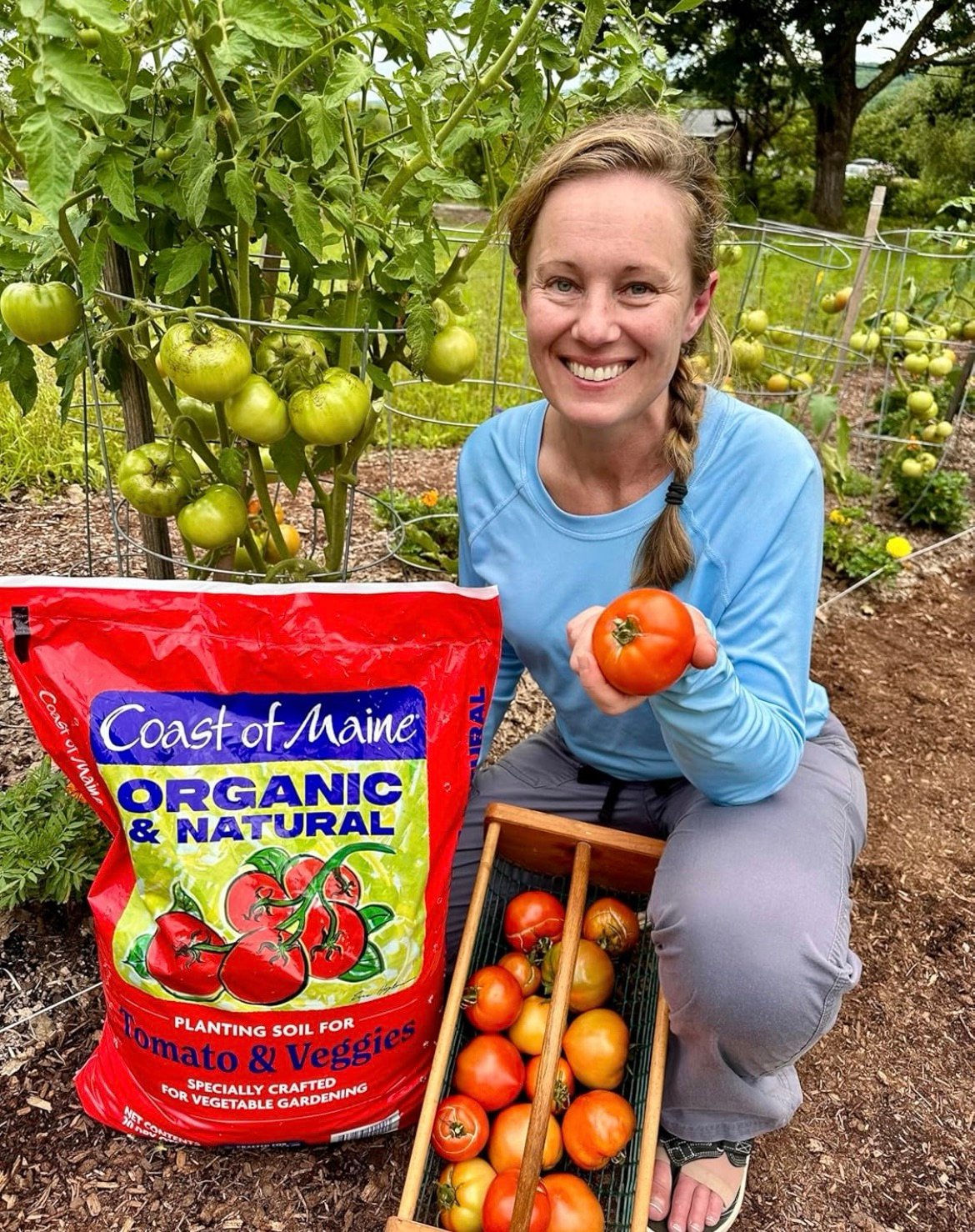
How to Test Your Soil Before You Plant Anything
Before you even add a single seed or transplant into your container, it’s smart to test your soil—especially if you’re mixing it yourself. I made the mistake one year of using leftover soil from another pot, and it turned out to be way too alkaline. My plants barely grew, and the leaves were pale and weak.
Now I always use my trusty 4-in-1 Soil Meter for Tomato Plants before planting. It checks pH, sunlight levels, moisture, and temperature all in one easy tool. For tomatoes, you want your pH to fall in that sweet spot between 6.2 and 6.8.
If your pH is off, don’t worry—we have organic ways to adjust your soil pH without adding harsh chemicals.
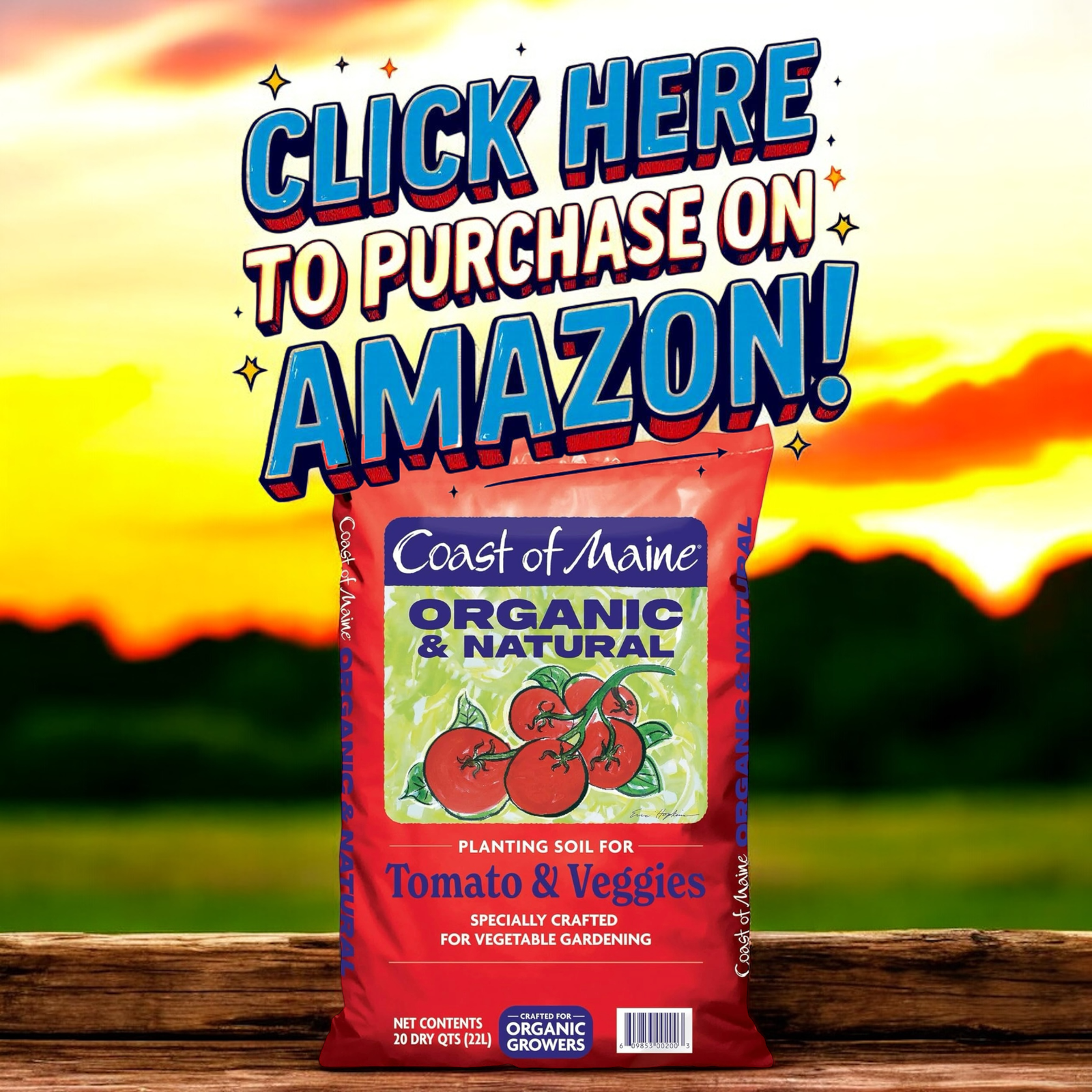
What You Should Never Use in Container Tomato Soil
I know it’s tempting to reuse old garden soil or grab a cheap bag from the big box store—but I’ve learned the hard way, that stuff can ruin your tomatoes.
Here’s what I avoid at all costs:
- Clay-heavy soil – it holds too much water and suffocates roots.
- Sandy fill dirt – drains too fast and holds no nutrients.
- Compost that isn’t fully broken down – it can heat up and burn your roots.
- Potting soil with “moisture retainers” – these often make it too soggy, especially for tomato roots.
Stick with a well-balanced mix like the one from Coast of Maine, or blend your own using ingredients you trust. I always say—your tomatoes will only be as good as the soil you give them.
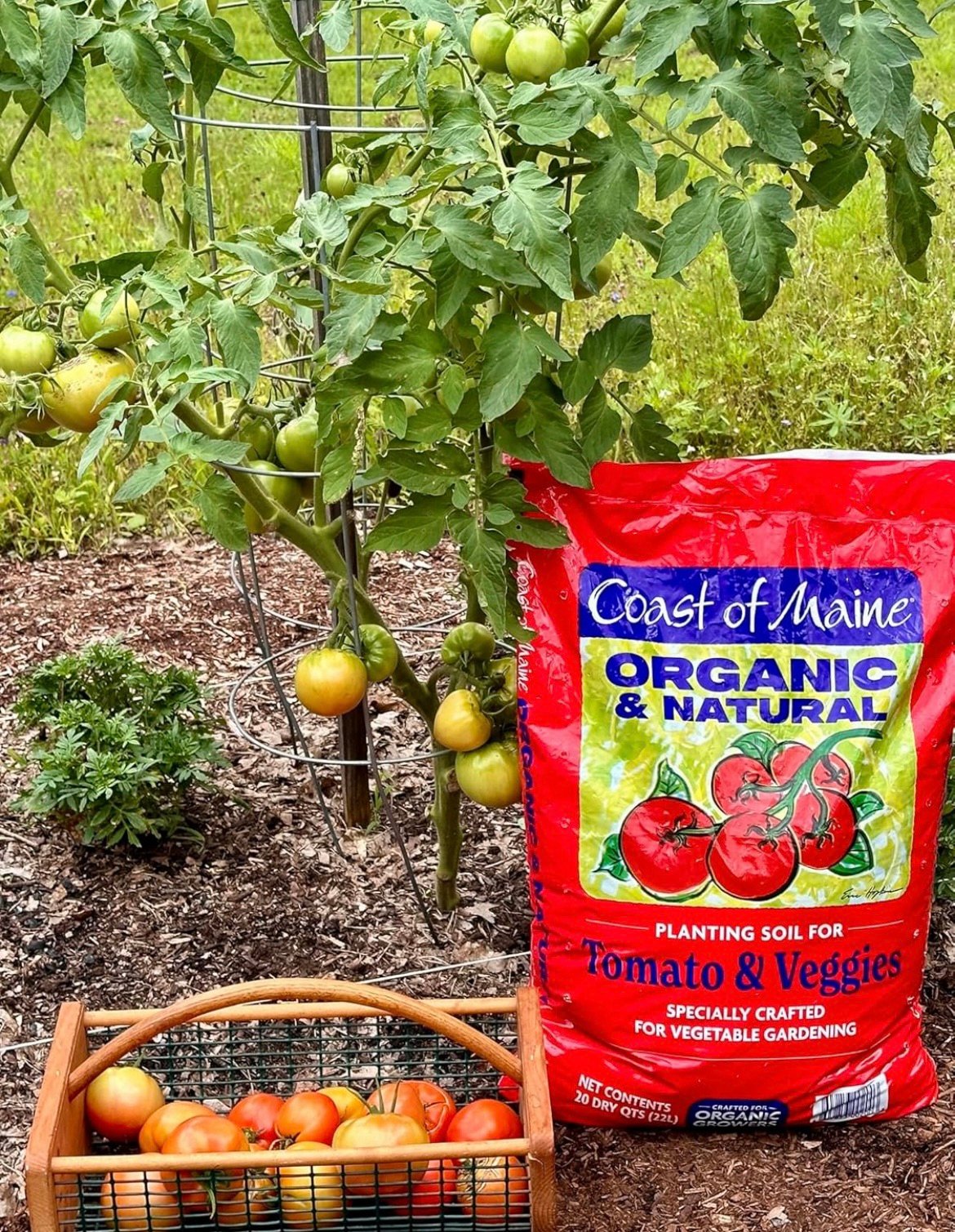
Do You Need Mulch for Potted Tomato Plants?
Yes—mulch matters even in containers, and I didn’t realize just how much until one hot summer dried out my pots faster than I could keep up with watering.
Adding a top layer of mulch helps:
- Retain moisture in the container (huge if you’re in a hot climate)
- Keep soil temperature stable, protecting roots from overheating
- Prevent soil splash, which helps reduce diseases like blight
I’ve had the best luck using shredded straw or fine bark mulch in my tomato pots. If you want to dive deeper, check out my guide on the best mulch for tomato plants in containers—it’s not just about water control, it can seriously affect your harvest.
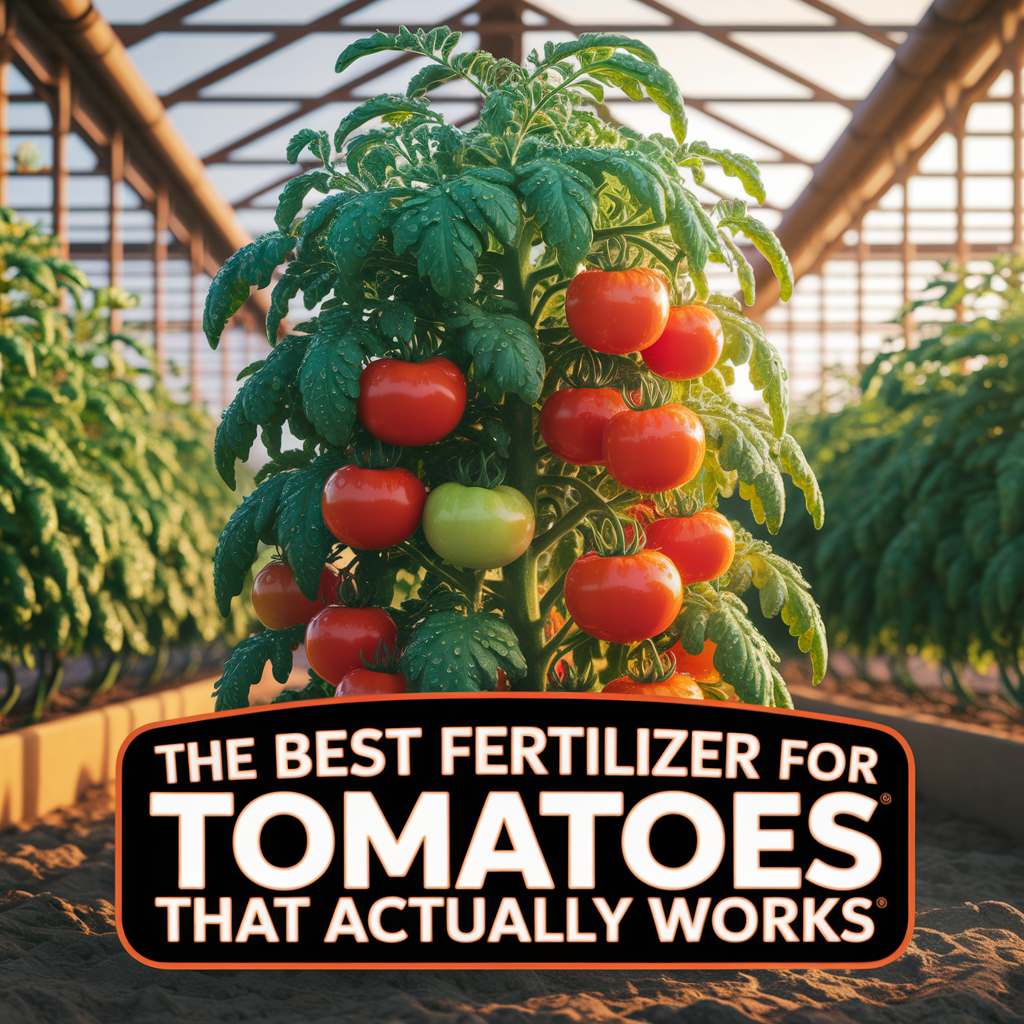
How Often Should You Fertilize Tomatoes in Containers?
Tomatoes in containers need more frequent feeding than those planted in the ground. The nutrients in potting soil tend to leach out quickly with regular watering, so here’s what’s worked for me:
- I start with a rich soil mix like Coast of Maine’s premium tomato blend at planting time.
- Then, I supplement every 10–14 days with a liquid tomato fertilizer or an organic slow-release option.
- I also keep a bottle of insect control that’s safe for edibles on hand in case pests try to move in while the plant is feeding.
A balanced schedule of fertilizing, watering, and monitoring will keep your tomato plants strong and fruiting all season.

Should You Refresh Soil During the Season?
If you’re growing indeterminate tomato varieties that produce for months, your container soil will get tired mid-season—and so will your plant if you don’t act. I’ve learned the hard way that long-producing tomatoes start to yellow and fizzle if the soil’s nutrients run out.
Here’s how I keep things going:
- Top off with fresh compost or organic potting soil halfway through the season.
- Sprinkle in a bit of balanced slow-release fertilizer.
- Water deeply afterward to help nutrients reach the roots.
If your soil seems compacted or water isn’t draining well, use something like the 4-in-1 Soil Moisture & pH Meter to check if pH or moisture levels are off—it’s saved a few of my plants!
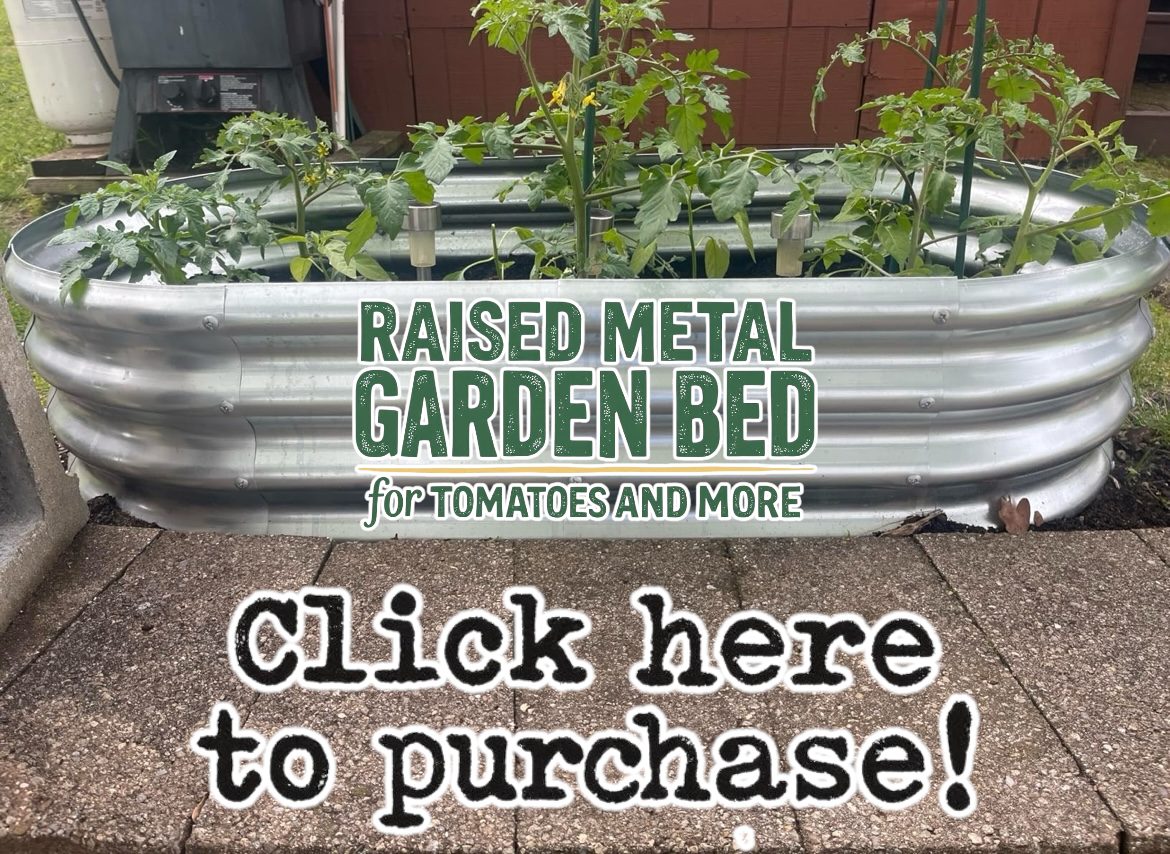
The #1 Mistake: Poor Drainage
Even the best soil won’t help your tomatoes if your pots don’t drain well. I’ve had plants literally drown in soggy containers early on.
Here’s what I do now:
- Always choose containers with multiple drainage holes
- Add a layer of small stones or broken clay pieces at the bottom (optional, but it helps)
- Use a soil mix with good aeration, like the Coast of Maine Organic Tomato Soil that already includes peat moss and compost
If you DIY your mix, remember: drainage isn’t just a side benefit—it’s what keeps roots alive.

Final Thoughts For Today… The Right Soil Mix Makes All the Difference
After years of trial and error, I’ve learned that tomato success in containers starts with soil. Whether you’re using a high-quality blend like Coast of Maine’s organic tomato soil or mixing your own with compost, perlite, and peat, your plants will thank you for getting the foundation right.
And if you’re not sure what your current soil needs? Test it! I recommend this simple soil pH and nitrogen test kit to check before planting—or halfway through the season when things start to fade.
Growing in containers doesn’t have to be hit or miss. With the best soil mixture for tomatoes, you’ll be harvesting juicy, flavorful fruit all summer long 🌿🍅
As an Amazon Associate we earn from qualifying purchases through some links in our articles.

